Yes, lime wood is suitable for carving and a lot more. This guide will look at lime wood, its characteristics, and the benefits of making it great for carving. Let’s also explore the ways to use lime wood in carving and in other woodworking projects.
Lime wood is a famous wood carving and woodworking wood. This wood also goes by the name basswood, so if you can’t find lime wood in a database, look for basswood.
Lime wood is the European version of the basswood lumber; however, some differences set them apart. So if you want to use lime wood or basswood in wood carving projects, read on for the latest information about this hardwood.
What is Lime Wood?
Lime wood comes from the tilia genus of trees and bushes. Tilia is native to temperate Northern Hemisphere countries. The most common name for lime wood and tilia is the linden for European species and the basswood for species in North America.
Lime trees are not related to citrus trees, and the term is commonly used in Britain and Ireland. The tilia tree species are large deciduous trees that can grow from 65 to 130 feet tall. These trees have heart-shaped leaves.
The exact number of tilia species is unknown as most of these can quickly develop hybrids whether they are grown in the wild or while on plantations.
The term “lime” comes from “lind” a Middle English term used in the 16th century. The word “linden” was an adjective as this describes something “made from lime wood or linwood.”
What are Lime Wood Trees?
Tilia trees have very strong and sturdy trunks that look like pillars. The branches divide and further subdivide into many pieces while the stems are thick yet fine. The leaves are very profuse, and thus, the foliage can become very dense during summertime.
The leaves of the tilia are heard-shaped and are usually asymmetrical. These trees bear tiny fruit, while the flowers look somewhat similar in all species. Stem cutting and grafting are the methods of cultivating tilia trees. These trees often grow very well in rich soil; however, these are susceptible to insect attacks.
What Are the Characteristics of Lime Wood That’s Great for Carving?
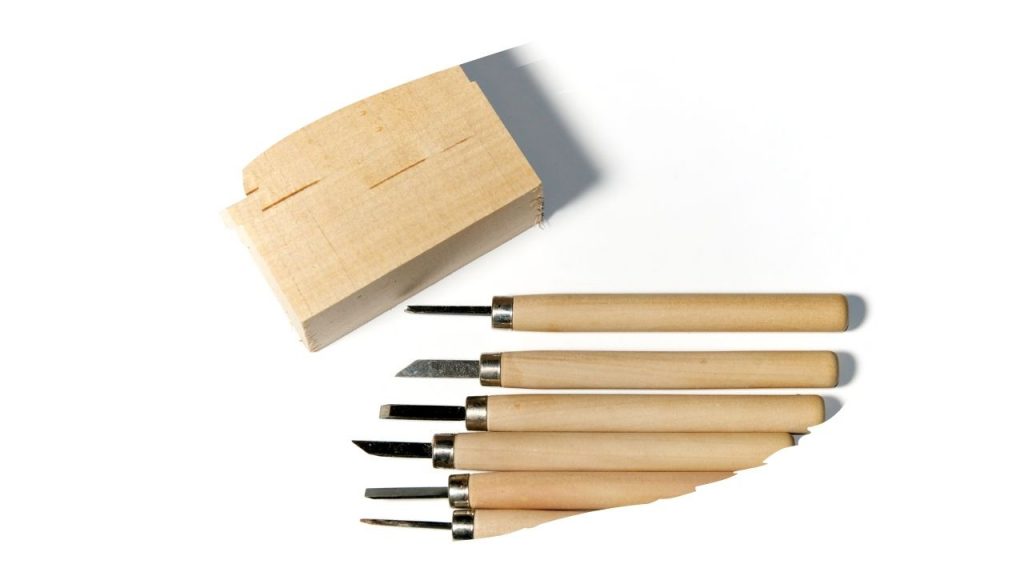
What makes lime wood perfect for carving? There are many wood characteristics, but for carving, a woodworker or hobbyist needs wood with the following features:
- Strength and durability – these properties prove that the wood you are using for carving can withstand harsh conditions and rigorous stress due to hand and power tools use. Despite carved ornaments used simply as display items, these need to be strong and durable enough to preserve their good shape and form for years to come.
- High workability – wood used for carving must have high workability properties. You can use all kinds of hand and power tools to cut, shape, carve, and finish your projects. Wood must accept different types of glues, paint, stains, and varnish. Finally, wood with high workability can take nails, screws, and other fastening devices.
- Great aesthetic value – wood is naturally aesthetic, but some are lovelier than others with deep grains, pronounced imperfections, and unique grain colors. Wood with these properties is the kind that woodworkers and carvers use for their projects.
- Readily available – woodworkers prefer readily- available carving wood, the kind that they can easily purchase or order from a hobby shop or supplier. Using this kind of wood means you can easily order your supplies in case you need more. Also, most wood used for carving is readily available and affordable than exotic or exported wood.
- Lightweight wood – carvers would prefer to use light wood as they need to manipulate the workpiece by hand. A heavy piece would not just be challenging to lift but also harder to transport a workstation, so it would be best to use a lightweight workpiece, especially for small carving projects.
Considering these properties, let’s find out why lime wood is the ideal carving wood, according to carvers and woodworkers.
Lime wood is solid and durable for small carving projects
Lime wood is strong and very stable. But despite this, the lime wood lumber is soft and crispy. Thus, it’s suitable for small carving projects. This wood won’t break even at the edges, unlike poplar wood. When you cut this wood into smaller pieces, you’ll get a smooth and clean surface. There is no fuzziness or roughness.
Lime wood is easy to work with
Lime wood is one of the most accessible carving woods to work with. You must use a sharp cutter, knife, or blade to preserve the wood’s sleek and straight edges when cutting lime wood. But despite this, lime wood will not break, especially along the edges, and thus, you’ll always get a smooth and appealing surface.
You can use various woodworking products on lime wood. Using wood glue is not a problem for sleek lime wood. It will accept all kinds of wood glue and is guaranteed to get the best results as long as you follow your wood glue instructions closely.
Lime wood also accepts staining and polishing. Doing these can significantly preserve the natural beauty of lime wood. If you’re carving, using lime wood, stains and polishes can improve the beauty and overall appearance of your project.
Another great thing about lime wood is that it can handle nails and screws perfectly. You don’t even need to pre-drill screws on lime wood, so you’ll complete your projects ahead of time.
Lime wood has a natural appeal
One of the most prominent properties of lime wood is its lovely natural linear grain. By looking at the surface, you won’t find any defects! The only way to find any unevenness in this wood is by using a magnifying glass.
This wood has a classy pale white cream hue that’s the same on all areas of the wood. This lovely pale color will not last long as this will eventually turn light yellow to yellow over time.
And because of lime wood’s lovely appearance and color, many woodworkers prefer it over other types of wood. Lime wood is also non-toxic compared to different kinds of wood. It is odorless, food-safe, and non-toxic, and thus, it is commonly used to carve kitchen utensils, children’s toys, and other home décor.
Lime wood is sustainable and readily available
Lime wood is not listed in the CITES Appendices and in the IUCN Red List of Threatened Species; therefore, it is a sustainable species. It is also widely available from local suppliers and from abroad. It’s essential to buy lime wood from trusted dealers to get the best quality workpiece for your projects.
Lime wood is light and, thus, easy to work with anywhere
Another excellent quality of lime wood is its ease of use. You can carry and work with large blocks of lime wood without breaking your back. This is because of this wood’s natural lightweight properties. You can hold the piece well and cut, carve, finish, and display it efficiently.
Disadvantages of Using Lime Wood
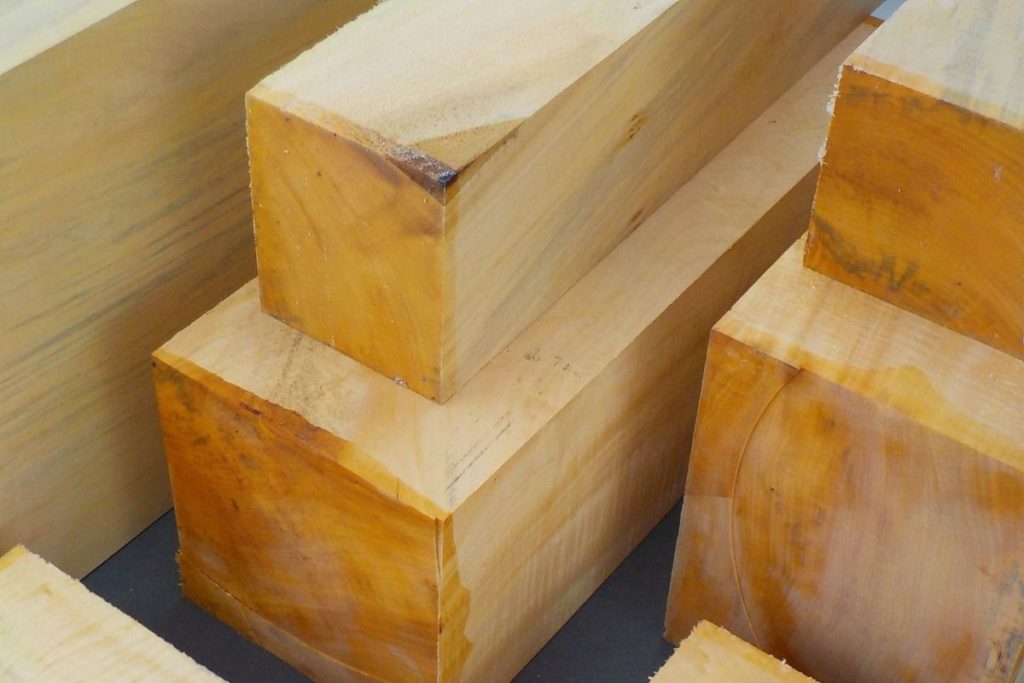
There are excellent benefits of using lime wood as there are some disadvantages. Consider the pros and cons of using lime wood before you start your project.
Not as durable as other woods
If you’re looking for durable wood for a large carving project, then look elsewhere. Lime wood is not as durable as other hardwoods. Also, lime wood is not suitable for high-impact use and, thus, is not a good material to make furniture and also for flooring.
You may find furniture and flooring with lime wood veneer surfaces, mainly to enhance the outer appearance of the wood used for the project.
You can’t use lime wood for larger carving projects
Lime wood will not do well in large carving projects because the wood is not as durable. Using large hammers and tools on lime wood may lead to a crumbling and uneven surfaces. This is why this wood is often used to make intricate carvings rather than big ones.
More expensive than other carving woods
Lime wood is more expensive than other woods used for carving. European lime wood is available only in Europe, so it can be costly to order this from abroad. In the United States, basswood is a counterpart of lime wood and is inexpensive to purchase.
How to Carve Using Lime Wood?
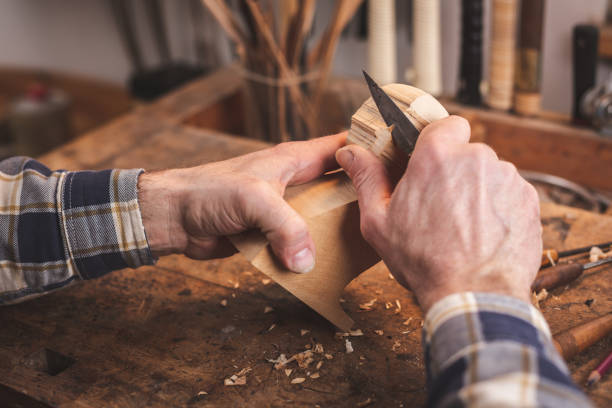
According to expert woodworkers and carvers, beginners will find lime wood a good practice workpiece. Its excellent workability makes it easier to carve than other hardwoods. Also, the natural beauty of lime wood makes it an inspiring lumber to use.
Just like working with wood, you need to start the process by sketching on the wood surface. Then start chiseling the workpiece bit by bit. You may finish the wood by applying polish or a preservative. Finally, sanding and other finishing touches may follow. Let’s look at every step of carving lime wood.
Sketch
You may have seen experts just going at it without sketching or drawing images on wood. Yes, they do this after sketching the final piece in their minds. They have a clear idea of where to start carving and how to gradually uncover the project’s final look. For beginners or people starting to use lime wood, it would be best to start your project with a sketch.
For a simple design, draw the final design on paper and then use a pencil to draw a simple outline of the design on wood. For a larger design, draw the front, sides, and back of the design on paper. This will give you a better perspective of the design instead of immediately chiseling your workpiece.
Another way to sketch is to draw the outlines directly on lime wood. To do this, you must have a well-established idea of the design, considering its front, sides, and back views. You can make the wood sketch as detailed as you want or highlight the design’s essential aspects.
Chisel
When you’ve established the actual design of your project and considered where to start attacking it, you may begin chiseling. A good and sturdy chisel will help you make clean cuts in a particular direction.
We recommend cutting the wood slowly, small piece after piece at a time, just to create an established outline appearance of the design. This is opposed to making significant quick cuts as you may not be able to get the exact shape you want.
For instance, carving a sitting dog is easy if you start with the large sections first, like the body and the head using a 1″ to 1.5″ chisel. Once the shape of the sitting dog has been established, use a smaller chisel such as ½” or ¼” size to carve more intricate details like the feet, face, eyes, and nose.
Use a knife for smaller details like the dog’s fur, nails, and facial features. A carving knife is excellent for cutting lime wood to emphasize fine details in your carving. Once you have all the elements ideally added to your project, you may start finishing it. Once you get the hang of carving, you may start creating more intricately-designed pieces.
Sand
Use fine sandpaper for sanding your finished lime wood carving. To make sanding more efficient, attach the sandpaper piece to a sanding block or a small tool with a handle if you’re sanding a smaller carving.
Sand the surface carefully. You will find that this wood is straightforward and responsive to sanding, so too much can ruin your final piece. Try to apply less pressure and just sand the area to remove unevenness and imperfections.
When you’re done sanding, use a shop vac to remove all fine wood dust on the surface of your project. Remove all the dust surrounding the project as you need a clean, dust-free area when applying a finish.
Finish
After carving and sanding wood, it’s time to apply some finishing touches. Most carvings from lime wood are preserved with wood stain. Staining is one way to highlight the lovely even grain of lime wood. Also, adding several coats can carefully preserve not just the appearance but also protect the wood from moisture attacks, mold, and insect attacks.
To apply a particular stain, follow the product usage instructions on the packaging. Follow closely the drying time to ensure that your project is ready for handling and use.
Meanwhile, some woodworkers prefer to paint over their projects. Lime wood responds well to paint and will dry quickly if you leave the workpiece undisturbed in a conducive drying environment. You can use acrylic paints because these dry quickly and can be waterproof as long as the piece has been cured correctly. Also, cleaning up with acrylic paint is easier as you only need water.
What are Other Lime Wood Species?
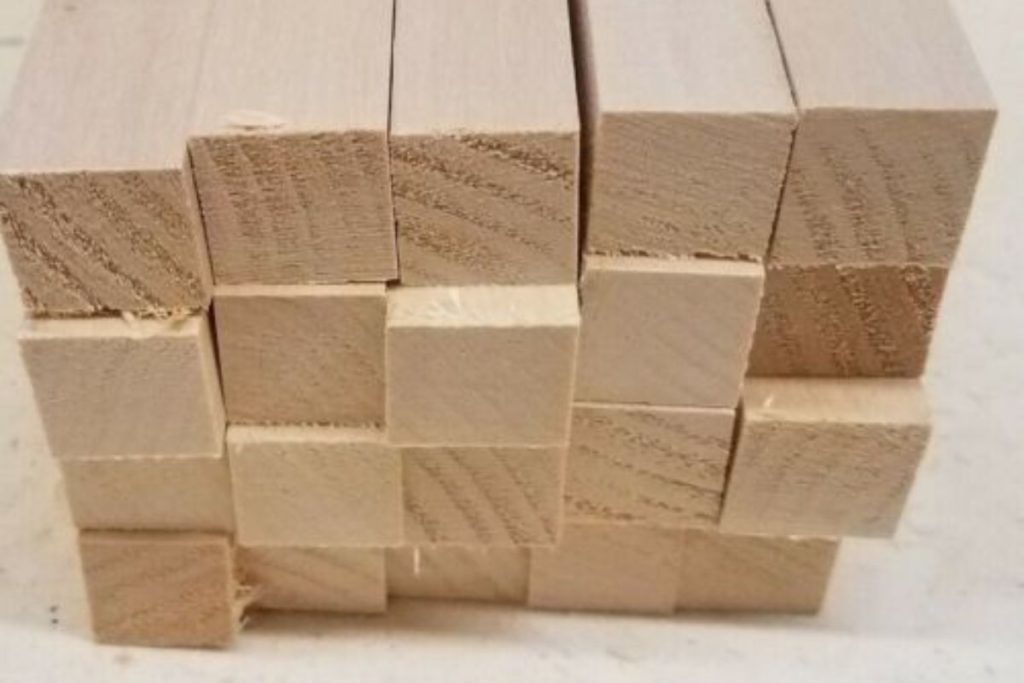
Many lime wood species are available, making it challenging to identify all species to date. Of the many species of this hardwood, two stand out because of their characteristics, beauty, and workability.
Basswood (Tilia americana)
Basswood is the most preferred wood for carvers because of its soft, even, and delicate texture. It is easy to work with, so it’s the choice among beginners as well. Basswood has a pale color that won’t affect the appearance of the finished carved product. The pale color also makes it easier to apply stains or to use acrylic paints.
Basswood can quickly shrink significantly before drying, so it’s best to use basswood that has been adequately dried for your projects. Well-dried basswood is stable and will not change its shape afterward. Compared to regular lime wood, basswood is light and soft, but it is stiffer and more durable. It will remain strong and rigid.
- Distribution: Basswood is naturally found in eastern North America
- Tree Size: 65 to 120 feet tall and 3 to 4 feet wide
- Average Dried Weight: 26 pounds per cubic feet
- Specific Gravity: .32, .42
- Janka Hardness: 410 pounds-feet
- Appearance: Basswood has a pale to very light brown surface. The wood’s sapwood and heartwood are undefined. You’ll find subtle growth rings, so it could be challenging to determine the tree’s age using the naked eye. It has a uniform color throughout its grain. You can hardly find any knots or other grain defects on its surface.
- Grain or Texture: Basswood has a straight grain with a fine and even texture. Untreated basswood has a moderate natural shine or luster, so many prefer to leave their lime wood projects unfinished.
- Resistance to Rotting and Mold: this hardwood is not durable and is vulnerable to mold, moisture, and decay. It is also susceptible to insect attacks.
- Presence of Odor: Basswood has no specific odor even when worked.
- Workability: Basswood is easy to work, soft, and light. It is suitable for intricate carving as it can accept hand tools very well. This wood is also easy to glue and finish. It does not take nails and other fasteners well. It will not do well with steam bending as it can easily crack and break with moisture.
- Availability: Basswood is available as carving blocks and lumber. When purchased as domestic lumber, the price of basswood can be low. However, basswood carving blocks are costly.
- Uses: Basswood is helpful for carving. It is excellent for making musical instruments, primarily electric guitar bodies. This wood is available as veneer and also as wood pulp to make paper and other wood products.
European Lime (Tilia x europaea)
European lime or linden wood is not related to the lime fruit or lime tree. This wood has better strength and hardness compared to basswood.
- Distribution: European lime wood is native to parts of Europe
- Tree Size: 65 to 130 feet tall and 5 to 6 feet wide
- Average Dried Weight: 33 pounds per cubic feet
- Specific Gravity: .42, .53
- Janka Hardness: 700 pounds-feet
- Appearance: European lime has a pale white to a creamy color. You can hardly see any growth rings from its surface. The color is uniform, and thus it’s great for carving and veneer. This pale white color will turn yellow or a pale brown hue over time.
- Grain or Texture: European lime wood has a fine or even grain texture. This is the main reason it’s most preferred by wood carvers.
- Resistance to Rotting and Mold: this wood is not resistant to mold, moisture, and decay. It is also non-resistant to insect or pest attacks.
- Presence of Odor: European lime wood does not have any smell or odor even when worked.
- Workability: This wood is easy to work with as it’s soft and very light. You must use sharp blades, cutters, and saws to cut this wood as it can become fuzzy. This wood also accepts glues very well. It dries quickly whether you’ve applied paint or varnish.
- Availability: This wood is available only in Europe and is inexpensive when purchased locally. When ordering from abroad, be prepared to pay higher with higher shipping fees.
- Uses: European lime wood is helpful in making veneer, plywood, musical instruments, hat racks, and cutting boards. It is best for carving small projects. It is also the wood of choice for turning items.
Final Words
Lime wood is excellent for carving because of its many great characteristics. It is a superb carving workpiece because it is durable and will hold well using carving equipment and tools. It has a lovely grain with even texture and appearance, making it the best for crafting decorative items.
This wood is also suitable for carving because it’s light and, thus, easier to handle. It can accept glues and finishes well so that you can use almost any kind of finish or paint. There are many species of lime wood, but only two are the most common: European lime wood or linden, from areas in Europe, and basswood from North America.
Consider the advantages and disadvantages of using lime wood in carving and follow the steps for carving success. These will make you more successful in your carving projects.
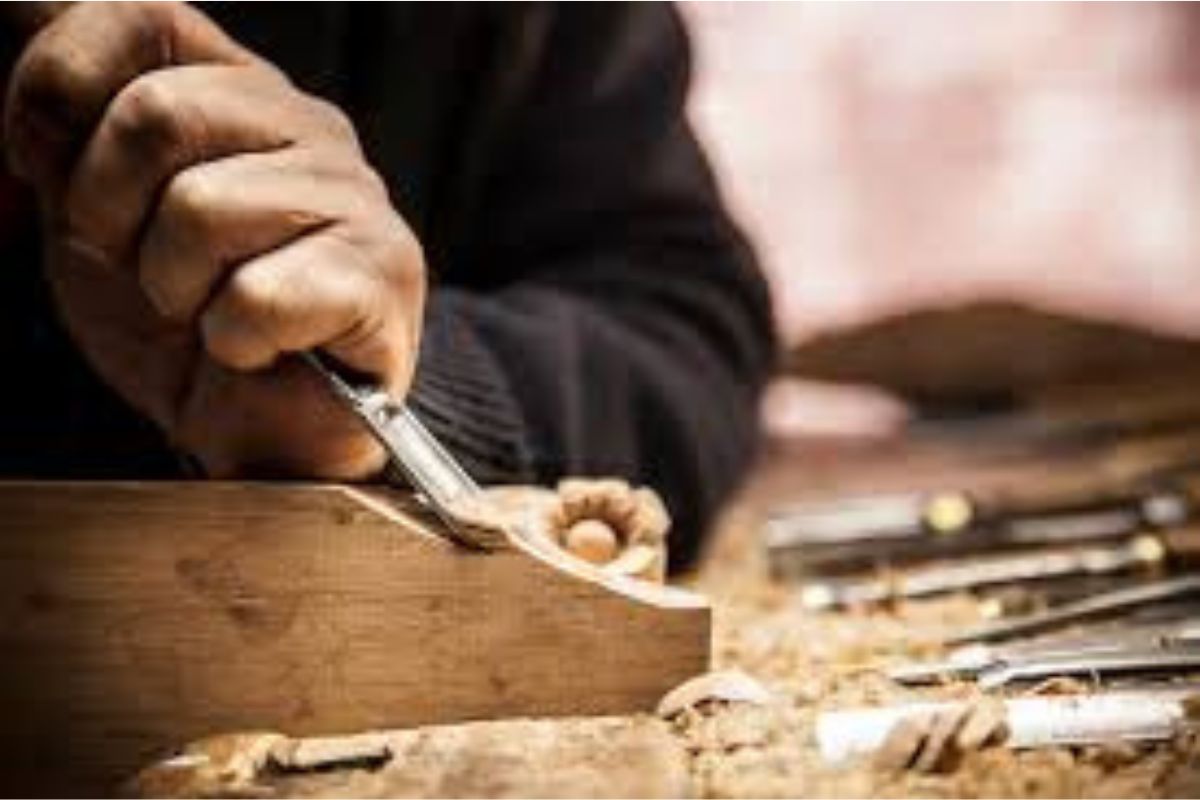
Leave a Reply